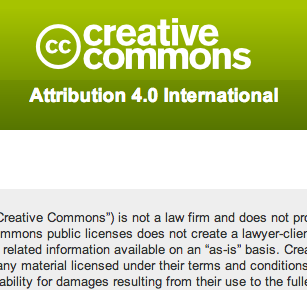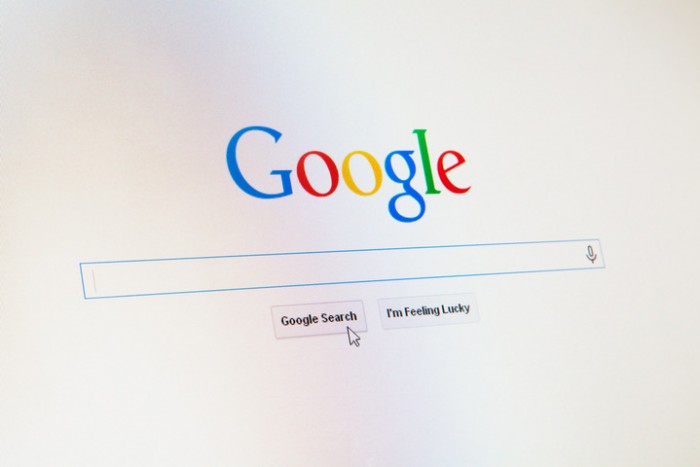Bloggers, have you ever taken a photo from Google Images and put it in your blog? Copied and pasted a piece of another blog post to enrich your own? Have you ever copied CSS code from a website to use as your own design? These are all common blogging actions and while mostly done without ill will, they could have major consequences. Below is a simple guide to making sure your blog is copyright infringement-free.
Assume that everything on the Internet is copyrighted
Copyright protects the intellectual property of content creators and gives them exclusive rights whether it be a piece of writing, music, photography, graphics, video, design or any other creative work. It gives the author complete control over where, when and how their work is distributed and used. In most countries, copyright is automatic upon publication, so it is best to treat every photo, video or quote as a protected piece of property.
Create original images, content, graphics, music and designs to avoid copyright infringement
Since we’re assuming everything is copyrighted, it is best to create your own works in order to avoid any potential infringement. Write down your own ideas and take your own photos to demonstrate. If you must use an excerpt of another person’s words, use quotation marks and a clear citation back to the source. For images, be sure to use those that are in the public domain, royalty-free or have a Creative Commons License (see next point).
Understand the Creative Commons and its different licenses

Creative Commons LicenseCreative Commons was created to help with the difficulties of traditional and digital media and its ever-growing sharing capabilities. It’s a standardized way for individuals or large institutions to give permission to use, copy, distribute, edit and build upon their work. The different licenses take into account the different levels of permissions. Some licensors allow full distribution with a simple attribution and link back to the license (click here for an example), while others are more restrictive.
Misunderstand the idea of fair use
The argument of fair use (or fair dealing in Canada) basically allows for copyrighted material to be used without acquiring permission from the rights holder. In instances such as news reporting, for educational or research purposes and parody, copyrighted material can be used and will be assessed by factors that are different according to different country legislature. For example, in the US, fair use is assessed by four factors: the nature, purpose, amount of material used, and the effect it had on the market. In Canada, the factors are a bit stricter. It’s important to understand the rules set by the country of your registered IP address before using any material under this law.
Think that your duplicated content will be hard to find
Although the Internet seems vast, Google Image Search has made finding images easier for content creators. So you may say to yourself that no one will find your blog in the midst of all of the others, but with the click of a button, the depths can become very shallow and you may have to deal with the consequences that are not easily remedied by simply taking the content down. In these cases, the creators still have an argument. To avoid this, always use material that is 100 % your own.
Simply give attribution credit back to the author
It may sound polite to do this but a common misconception is that a simple attribution or credit link will legally satisfy the rights of a content creator — it won’t. Permission directly from the author is required and if you cannot get in touch with the original maker, it’s best to use a different image altogether. Chances are, there are many other images that will convey the same message in your post.
While reflecting on the rules of copyright, it’s best to assume that all content is protected and to go forward with this thought in mind. Creating your own material, understanding Creative Commons, not mistaking the idea of fair use and realizing that you are never too small to be found on the Internet are all great ways to ensure that your blog is legal and free from copyright infringement. Enjoy the freedom of the blogosphere, but do it legally!
This post was not written by a lawyer but is based on personal research. If you have questions about plagiarism, copyright laws, etc., please consult a qualified legal professional.
Category: Creative & Design, Development, Digital Culture
Tags:Tags: copyright, creative commons, fair use, infringement, intellectul property, law, licenses, protection

Category: Branding, Development, Marketing, Social, Uncategorised
Is your business active on social media networks like Twitter, Facebook, Instagram and Pinterest? If so, do your profiles use…
Read More
Category: Branding, Digital Culture, Marketing, Social Management
It’s 2016 and social media is as popular as ever. With new networks like Instagram and SnapChat taking centre stage,…
Read More
Category: Digital Culture, Networking, Social
As of April this year, LinkedIn had a staggering 433 million users – that’s 2 new users per second! A…
Read More
Category: Branding, Creative & Design, Digital Culture
Launching a small business? You need a name! One of the most important career decisions you’ll make, the name of…
Read More
Category: Development, Digital Culture, Marketing
It’s 2016 and a new year is a great time for a search engine optimization tune-up. The better your SEO,…
Read More
Category: Branding, Copywriting, Digital Culture, Uncategorised
If you’re anything like the team here at Yabsta, you’re probably wondering exactly where the time went – how is…
Read MoreGary Taylor
Email: grt@yabsta.com
Phone: 1 (441) 278-1000
Bermuda
Antoinette Richardson
Email: aharris@bermudayp.com
Swan Building, 26 Victoria Street,
Hamilton, Bermuda HM 12
Cayman
Delisia Ebanks
Email: delisia@yabstadigital.com
Yabsta Digital
23 Lime Tree Bay, 2nd Floor, Governors Square, West Bay Road, Grand Cayman
Mail: P.O. Box 31112, Grand Cayman KY1-1205
Phone: +1 (345) 743-0035
USA
Joanne Weeks
Email: weeks@yabsta.com
Phone: 360-678-7119
Jersey CI & Guernsey CI
Katy Wright
Email: kwright@yabsta.com
UK
Tony Danisz
Phone: 1903820737